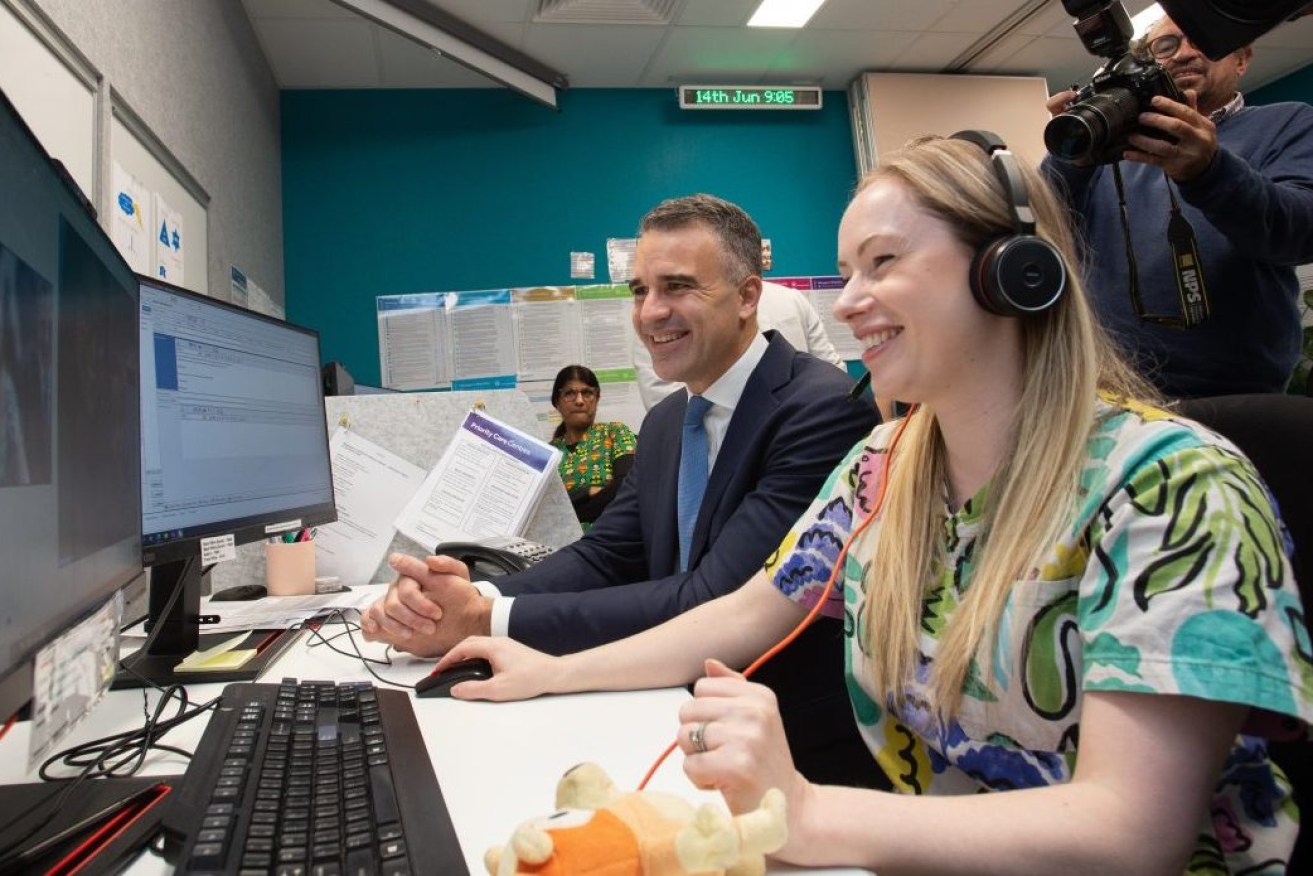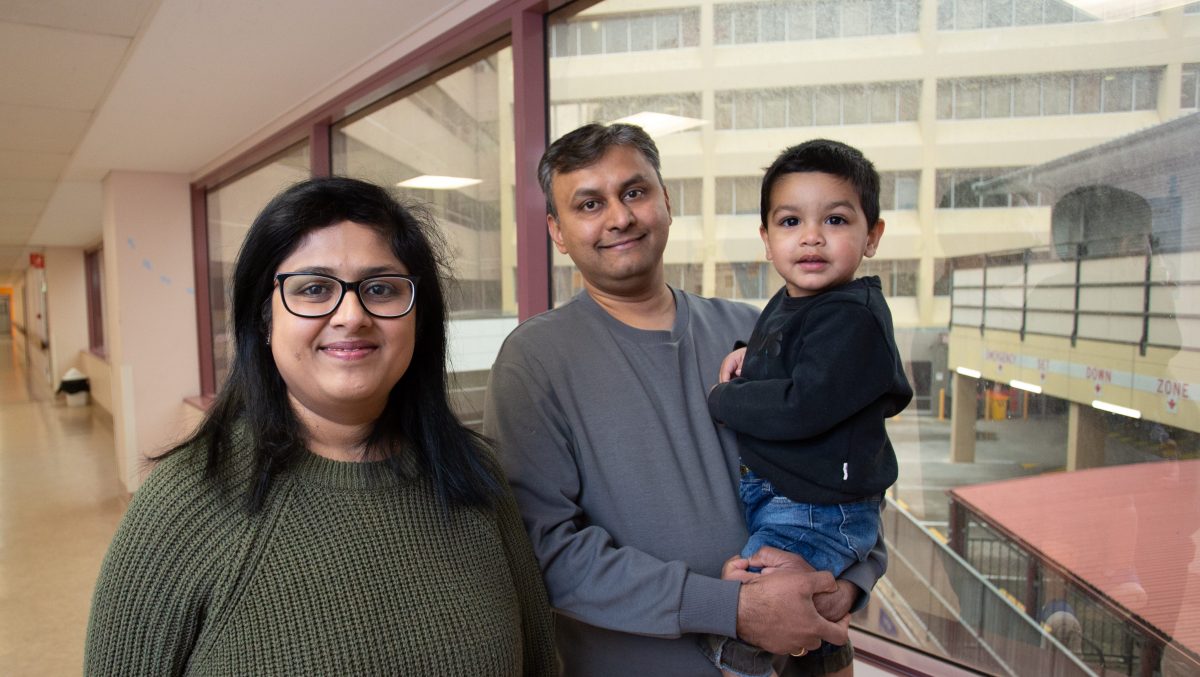Virtual health care boosted as budget blows surplus
Virtual health care services helping keep patients out of hospital emergency departments will get a $130 million boost in tomorrow’s State Budget, which will now feature a $249 million deficit instead of the $233m surplus predicted last year.


Premier Peter Malinauskas with virtual care nurse consultant Izzy Taylor. Photo: Brett Hartwig/InDaily
Treasurer Stephen Mullighan is focused on a “health and housing budget” hinting at centrepiece plans to build on 400 new public houses announced last year that will get “thousands more South Australians into safe, secure and affordable housing”.
While the Treasurer did not reveal further details, he did address the budget blowing out to a $249 million deficit rather than the $233 million surplus that he promised at last years’s budget delivered soon after the state election.
Mullighan blamed an unexpected $150 million spend on flood relief, another $470 million into hospitals plus $42.3 million child protection and write down in GST by $95 million for keeping the state’s books in the red.
Another $40 million in flood relief will be in the budget for next year, with the Treasurer saying the centrepiece to a cost-of-living relief package is the already announced commitment to offset power bill rises with $500 to 420,000 households.
The Malinauskas Government committed $127.2 million to the National Energy Bill Relief Plan, which will be matched by the Commonwealth dollar for dollar so eligible households receive rebates of $500, while 86,000 eligible small businesses receive rebates of $650.
Today, the State Government announced the $130 million for virtual health would be split, with $30.8 million over four years extending the service at the Women’s and Children’s Hospital and $67.8 million over five years to make the SA virtual care service based at Tonsley permanent.
Amey and Abhilasha Chakor have used the Child and Adolescent Virtual Urgent Care Service four times for their two-year-old son Aryan, with the most recent following a bout of vomiting when there were no available GP appointments for two days.

Abilasha, Amey and Aryan Chakor at the Women’s and Children’s Hospital. Photo: Brett Hartwig
Chakor said he welcomed the money being committed to the service in the State Budget but hoped there would be more to support for families like his own not just in health, but also in assisting with rapidly rising interest rates and power bills.
“I was worried, I’m so worried for our kid, he’s the only one we have,” Amey Chakor said, adding that it was a relief to have their son diagnosed and a script for medicine sent to a nearby pharmacy.
“We would like to have more children but not with the cost of living now.”
About 18,000 people have used the adult virtual health care service since it was established in December 2021, with the government saying it has kept 80 per cent of those patients from presenting at emergency departments.
On top of the funding for the two virtual health care services, the new State Health Control Centre will receive $31.5 million over five years to upscale its operations.
The initial phase of the centre was launched last month at Tonsley – moving to the new SA Ambulance Service headquarter at Mile End when it opens in 2025 – giving 24/7 support and oversight of the health and hospital system to improve hospital flow and overcrowding.
Child and adolescent virtual service medical unit head and paediatric emergency specialist Dr Benjamin D’Souza said the virtual service is the first of its kind in Australia. It was established during the COVID pandemic and helped keep patients out of emergency departments.
“Thirty per cent of our patients are from the country and regional South Australia and we are expanding the service,” D’Souza said.
Doctors and nurses overseeing the service also work closely with the SA Ambulance Service and have enabled 1,020 ambulances to treat children at home instead of being taken to hospital.
“We’re making massive investments to improve the system, but a key challenge is the number of patients who present to an ED sicker than they otherwise would be because of a nationwide shortage of GPs,” Malinauskas said.
“These virtual care services have already demonstrated they can play a vital role in helping people get the help they need without leaving home, easing pressure on the system.”




